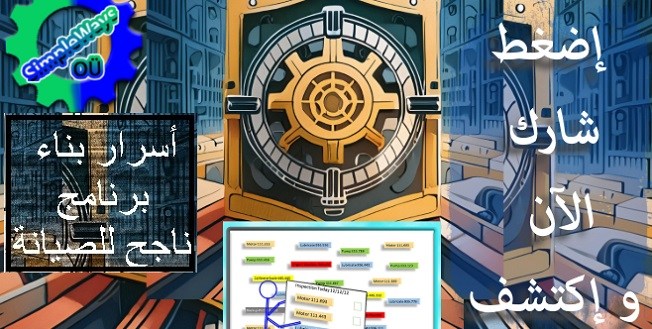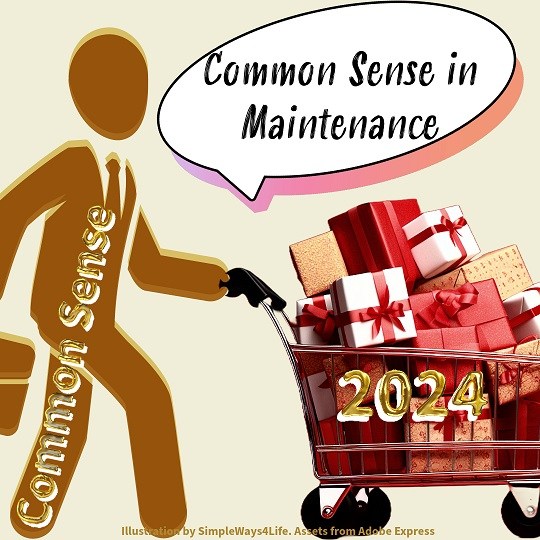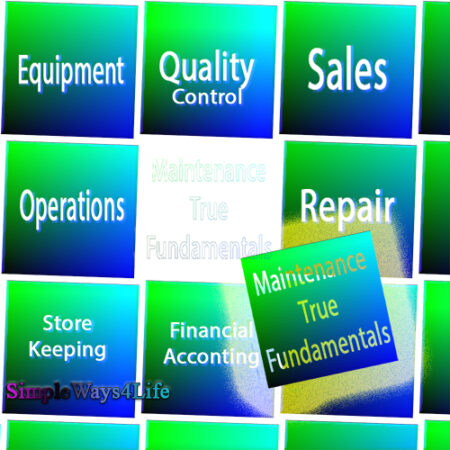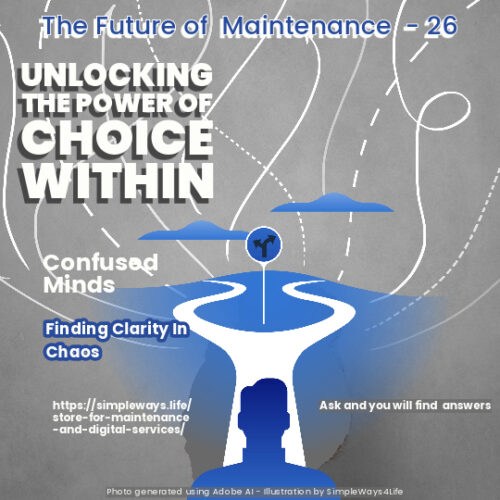In the complex world of maintenance, complex methodologies and advanced technologies often take center stage. Unfortunately there is an often-overlooked ally – the “common sense”. Beyond the formulas and predictive analytics, common sense serves as a guiding force, providing practical insights and facilitating intuitive decision-making. This article explores the indispensable role of common sense in maintenance, demonstrating how a balance of technical expertise and practical wisdom can lead to enhanced equipment performance, reduced downtime, and overall reliability excellence. For an introduction to common sense, intuition and rationality, you can refer to our previous article: Common Sense Vs Rationality, which is better?

CUSTOMPRICE-TO2JAN26
Common Sense in maintenance is Embracing Simplicity in Complexity
Reliability engineering, with its array of methodologies and tools, can sometimes veer into complexity. Common sense acts as a compass, guiding engineers to simplify processes and strategies. Embracing simplicity ensures that reliability measures remain accessible and actionable for everyone involved, from operators to maintenance teams. This simplicity in complexity can be achieved through:
User-Centric Reliability:
Common sense prompts reliability engineers to adopt a user-centric approach. Understanding the needs and experiences of the end-users and frontline maintenance personnel is crucial. Practical insights from those who interact daily with the equipment often reveal valuable information that might be missed in purely data-driven analyses.
Early Detection through Intuition:
While data analytics and predictive algorithms are invaluable, common sense often signals early warnings intuitively. Experienced maintenance professionals rely on their instincts to detect subtle changes in equipment behavior, identifying potential issues before they escalate. Integrating this intuitive wisdom into formalized monitoring systems enhances the overall reliability strategy. This shows how valuable is common sense for maintenance.

CUSTOMPRICE-TO2JAN26
Human Factors in Decision-Making as an example of common sense in maintenance
Common sense emphasizes the human factor in reliability decisions. It acknowledges that even the most advanced technologies are operated and maintained by people. Considering human factors, such as workload, training, and communication, ensures that reliability measures align with the practical realities of the workforce. To integrate those factors in the maintenance strategy we need to focus on the value of the human factor in:
Integrating Historical Knowledge:
Common sense encourages reliability engineers to tap into historical knowledge. Long-serving employees possess a wealth of experience and insights gained from years of working with specific equipment. Integrating this historical knowledge into reliability assessments adds depth and context to decision-making.
Prioritizing Critical Equipment:
Common sense guides the prioritization of critical equipment. While data analytics offer insights into failure probabilities, common sense dictates focusing on the equipment that has the most significant impact on operations, safety, or production output. This strategic prioritization ensures that resources are allocated where they are most needed.

CUSTOMPRICE-TO2JAN26

CUSTOMPRICE-TO2JAN26
Continuous Improvement Mindset:
A common-sense approach promotes a continuous improvement mindset. Reliability engineering is not a one-time activity but an ongoing process. Encouraging teams to learn from failures, celebrate successes, and iteratively refine reliability strategies aligns with the intuitive understanding that improvement is a perpetual journey.
Aligning with Organizational Goals:
Common sense steers reliability efforts to align with broader organizational goals. While technical metrics are essential, common sense prompts engineers to connect reliability measures with the overarching objectives of the business. This alignment ensures that reliability initiatives contribute directly to the organization’s success. This has many facets to care about. Some of the top approaches to achieve this are:
Balancing Proactive and Reactive Approaches to balance cost
Reliability excellence requires a balanced approach, combining proactive and reactive strategies. One of the prime factors in selecting proactive strategies over reactive strategies or vice versa is the financial feasibility of the task. Common sense dictates that while predictive maintenance is crucial for anticipating issues, reactive measures should also be in place as a default action when there is no other feasible solution. Any how reactive actions are obligatory for the unexpected events and the team need to be prepared for it in advance. A balanced strategy ensures adaptability and resilience.

CUSTOMPRICE-TO2JAN26
Effective Communication:
Effective communication is a cornerstone of common sense in reliability engineering. It prompts engineers to communicate complex technical information in a clear and understandable manner to stakeholders at all levels. This transparent communication fosters collaboration and ensures that everyone involved comprehends the importance of reliability measures.
Customizing Solutions:
Common sense calls for customized solutions. While industry best practices provide valuable frameworks, each worksite has its unique challenges and nuances. A common-sense approach tailors reliability strategies to the specific context of the organization, accounting for factors such as climate, operational demands, and equipment age.
Pragmatic Decision-Making:
Reliability engineers often find themselves at crossroads where multiple decisions need to be made. Common sense guides pragmatic decision-making, considering factors like cost-effectiveness, feasibility, and the immediate impact on operations. Pragmatism ensures that decisions are not only technically sound but also practical and executable.
Evaluating Technological Investments:
In an era of rapid technological advancement, common sense plays a pivotal role in evaluating and implementing new technologies. It prompts engineers to assess whether a particular technology aligns with the organization’s goals, provides tangible benefits, and is feasible in the current operational context.

CUSTOMPRICE-TO2JAN26
How to implement Common sense in maintenance?
Integrating Common Sense into Formal Processes:
While common sense is often considered an informal aspect of decision-making, there is value in integrating it into formal reliability processes. Establishing mechanisms to capture and utilize the intuitive insights of experienced personnel ensures that common sense becomes a structured and recognized part of reliability engineering.
Learning from Practical Experience:
Common sense acknowledges the value of practical experience. It encourages engineers to spend time in the field, observing equipment in real-world conditions, and learning from the experiences of maintenance teams. This firsthand experience enhances the engineer’s understanding of the equipment’s behavior and the team’s behavior beyond what data alone can reveal.

CUSTOMPRICE-TO2JAN26

CUSTOMPRICE-TO2JAN26
Conclusion:
In the realm of reliability engineering, common sense emerges as a silent but potent force. It complements the technical expertise and advanced methodologies, providing a grounded and practical perspective. Embracing common sense in reliability efforts leads to more effective decision-making, a user-centric approach, and a culture of continuous improvement. As organizations strive for reliability excellence, they should recognize common sense as an invaluable ally on the journey to optimal
If you feel you need help with any of these ideas we discussed, request a Management Consultancy or Coaching Services From our Store











One Comment